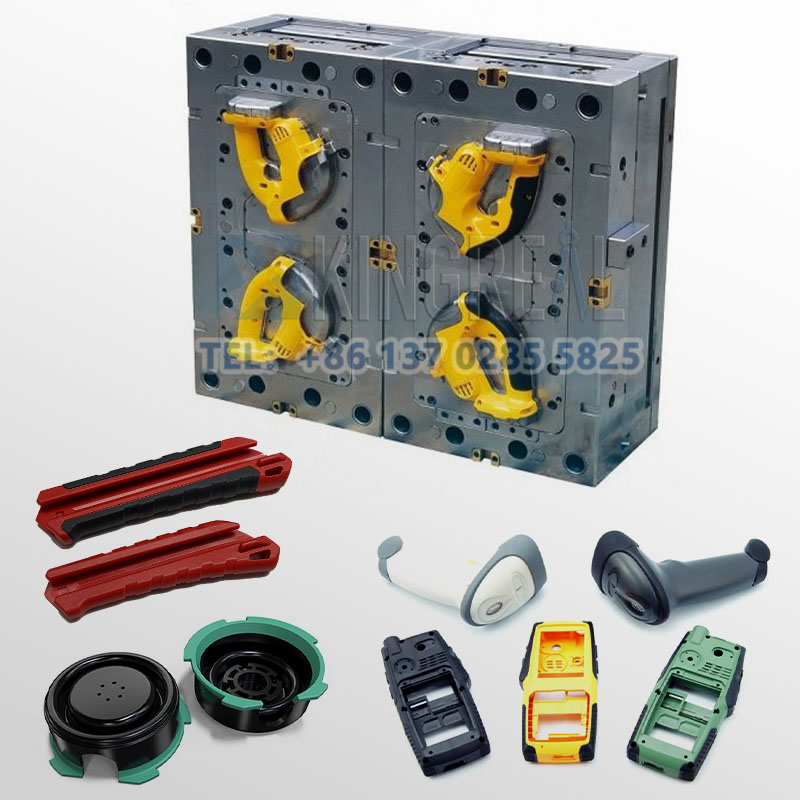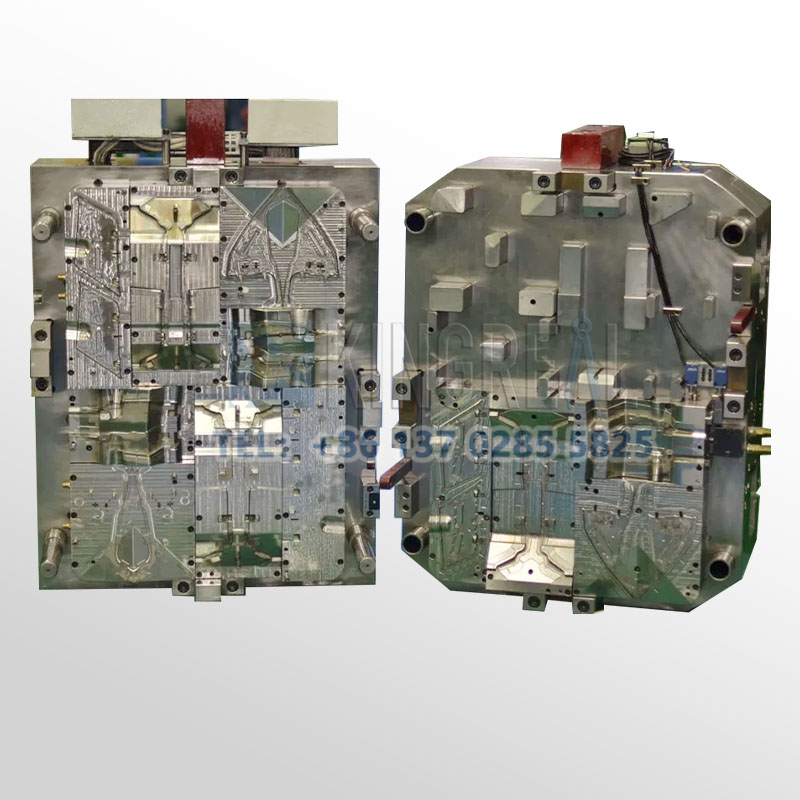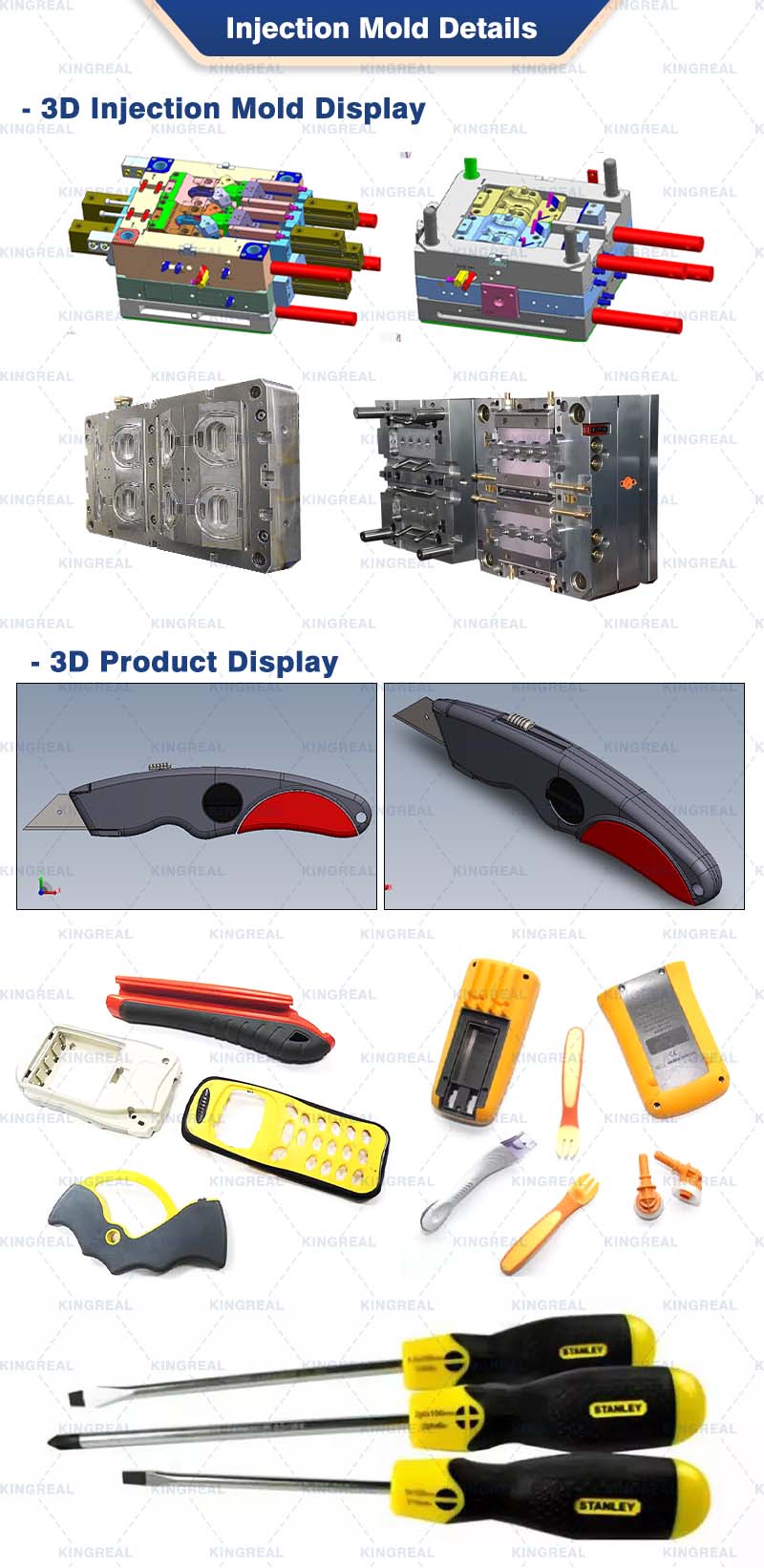
KINGREAL UNIVERSAL IND., LTD
Phone
+86-13702855825Many people may be confused about double shot injection molds when they first come into contact with them. Double shot injection molding is an advanced manufacturing technology that uses a combination of different materials to produce complex plastic parts. Recently, KRMOLD has received many inquiries from customers, especially about how to control the temperature of double shot injection molds. I hope this article can help you better understand the temperature control methods of double shot injection molds. |  |
| 1 | Control Methods for Temperature of Double Shot Injection Molds |
| 2 | Selection of Materials for Double Shot Injection Molding |
| 3 | Precautions for Double Shot Injection Molds |
1. Control Methods for Temperature of Double Shot Injection Molds
The temperature distribution in double shot injection molds is often uneven and closely related to the time point in the injection cycle. The main function of the mold temperature controller is to keep the mold temperature within the set range, thereby preventing temperature fluctuations during production. The following are several commonly used methods for temperature control of double shot injection molds:
1
Control fluid temperature
This is the most common method and can meet the control accuracy in most cases. However, there may be a difference between the temperature displayed by the controller and the actual temperature of the mold, and the temperature fluctuation of the mold is relatively large. This is because the factors that affect the mold temperature (such as injection cycle, injection speed, melting temperature, and room temperature) have not been directly measured and compensated.
2
Direct control of mold temperature
This method is usually adopted when the temperature control accuracy is high. By installing a temperature sensor inside the double shot injection molds, thermal factors that affect the mold temperature can be directly measured and compensated. The advantage of this method is that the mold temperature is consistent with the temperature set by the controller, which can usually better maintain temperature stability.
3
Joint control
The joint control method combines the above two methods and can control the temperature of the fluid and the mold at the same time. In this process, the installation position of the temperature sensor is crucial and should be placed in the part that has a significant impact on the quality of the injection molded part. In addition, when connecting multiple mold temperature controllers to the double shot injection molding machine controller, operability, reliability and anti-interference should be considered, and digital interfaces are recommended.
Thermal balance of injection molds
The heat conduction between the double shot injection molding machine and the mold is the key to producing injection molded parts. Inside the double shot injection molds, heat is transferred in many ways: plastics (such as thermoplastics) transfer heat to the steel of the mold through thermal radiation, and then to the heat transfer fluid through convection. The balance of heat can be described by the following formula:
P=P m −P s
Where P is the heat taken away by the mold temperature controller, P m is the heat introduced by the plastic, and Ps is the heat dissipated from the mold to the atmosphere.
The purpose of controlling mold temperature and its impact on injection molded parts:
In the double shot injection molding process, the main purpose of controlling mold temperature is to heat the double shot injection mold to the working temperature and keep it constant. The successful implementation of these two points can optimize the cycle time and ensure the stability and high quality of the injection molded parts. Mold temperature affects surface quality, fluidity, shrinkage, injection cycle and deformation. For thermoplastics: higher mold temperatures usually improve surface quality and fluidity, but may extend cooling time and injection cycle; lower mold temperatures may reduce shrinkage in the mold, but increase the shrinkage of the injection molded parts after demolding. For thermosetting plastics: higher mold temperatures usually reduce cycle time, and cooling time is closely related to the cooling requirements of the parts. In addition, in plastic processing, higher mold temperatures can shorten plasticizing time and reduce the number of cycles. |  |
2. Selection of Materials for Double Shot Injection Molding
1
Good machining performance
Select steel grades that are easy to cut and can obtain high-precision parts.
2
Excellent polishing performance
The working surface of injection molded parts usually needs to be polished to a mirror finish. The recommended surface roughness is Ra≤0.05μm, and the hardness of the steel is preferably HRC35-40.
3
Good wear resistance and fatigue resistance
The injection mold cavity is washed by high-pressure plastic melt and is subjected to alternating stress of hot and cold temperatures. When selecting high-carbon alloy steel, its toughness must be ensured to avoid surface cracks.
4
Corrosion resistance
For some plastics (such as polyvinyl chloride and flame-retardant plastics), it is necessary to select steel with good corrosion resistance.
3. Precautions for Double Shot Injection Molds
When designing double shot injection molds, the following points should be noted: The reinforcement ribs should not be too thick, usually not more than half of the meat thickness, to avoid shrinkage. If the appearance and function are not affected, try to design the smooth surface into a bite surface to reduce the difficulty of processing and improve the aesthetics. Part of the meat thickness can be removed around the boss to prevent shrinkage and sinking. For thin-walled holes, the edge and height of the hole need to be increased to enhance strength. In order to improve the mechanical strength of the product, inserts can be embedded during double shot injection molding. Key points: Ensure the firmness of the inserts, and the glue layer around the inserts should not be too thin. The fit between the inserts and the insert holes should be moderately tight to facilitate placement. To ensure the close combination of the inserts and the plastic, they can be designed into rough or concave and convex shapes (such as embossing, drilling, etc.). |  |
Through the above detailed discussion on temperature control of double shot injection molds, I hope it will help you better understand double shot injection molding and achieve greater success in practical applications.